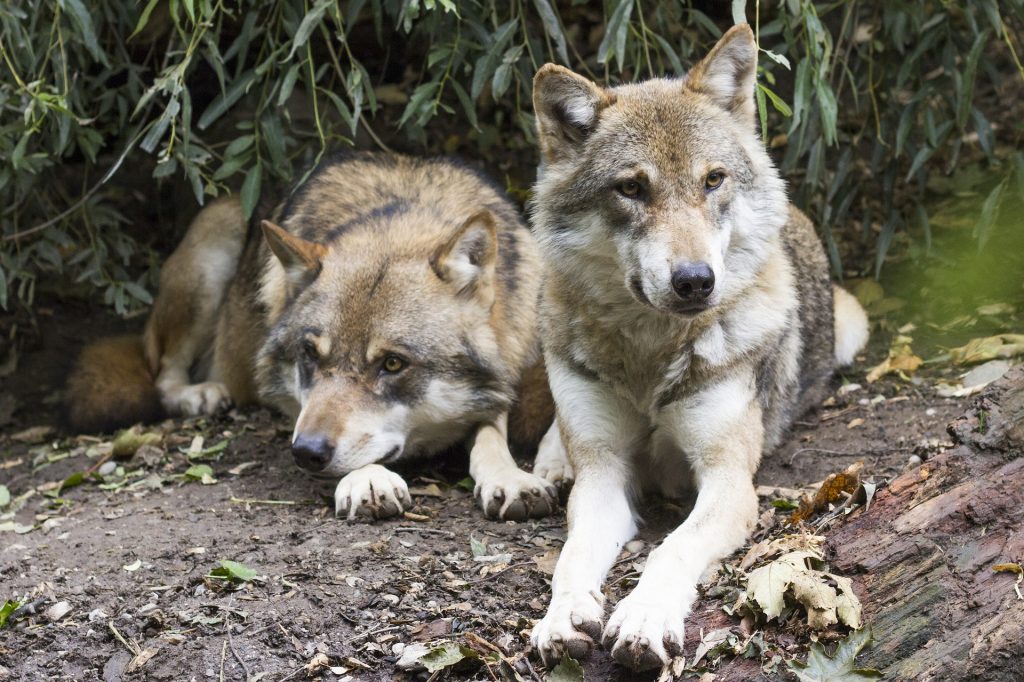This post was contributed by Dr Simon Pooley from Birkbeck’s Department of Geography, Environment and Development Studies. His paper ‘An interdisciplinary review of current and future approaches to improving human–predator relations‘ (Pooley et al. 2017) was published in the journal Conservation Biology on 13 February 2017.
 Faced with shrinking habitats and increasing competition for natural resources, large charismatic predators are under severe threat in many developing countries. In contrast, in developing countries where protection is effective, predators like crocodilians and wolves are increasing. In both cases, the impacts on predators and humans bring the challenges of coexisting with wildlife sharply into focus. This year we have already had controversy over wolf culls in Scandinavia, wolves killed in Tuscany, mountain lions and black bears have been slated for culls in Colorado, USA, and there have been crocodile attacks in Australia, Indonesia Malaysia, South Africa and Zambia (among other incidents).
Faced with shrinking habitats and increasing competition for natural resources, large charismatic predators are under severe threat in many developing countries. In contrast, in developing countries where protection is effective, predators like crocodilians and wolves are increasing. In both cases, the impacts on predators and humans bring the challenges of coexisting with wildlife sharply into focus. This year we have already had controversy over wolf culls in Scandinavia, wolves killed in Tuscany, mountain lions and black bears have been slated for culls in Colorado, USA, and there have been crocodile attacks in Australia, Indonesia Malaysia, South Africa and Zambia (among other incidents).
Currently, the dominant approach to managing human-predator relations focuses on negative impacts and frames the issue as ‘human-wildlife conflict’. This misses the complexity of the relationships in question, omits key influencing factors, and has limited effectiveness in delivering mitigation of conflicts where they occur.
With this in mind I convened a team of experienced, open-minded experts from the natural and social sciences and the humanities, to discuss the problem of human-predator relations. We were hosted by Professor David Macdonald at WildCRU headquarters in rural Oxfordshire. Following a stimulating day of interdisciplinary dialogue, we forged the resulting profusion of ideas, perspectives and experiences into a position paper (Pooley et al. 2016).
In our paper, we review the limitations of current approaches to mitigating conflicts over predators, observing that scientifically sound recommendations have often foundered for unforeseen reasons. These include locals feeling left out of the process, the high costs in terms of time and labour of effective livestock protection methods, resistance to what locals see as infringements on their freedom of behaviour, and disagreements over what causes predator attacks (e.g. supernatural explanations versus scientific ones).
We identify fruitful perspectives on how to reframe, research and successfully intervene in conflict scenarios. Importantly, conservationists need to rethink ‘conflict’ as a framework for dealing with problematic human-predator encounters. Framing an encounter as a ‘conflict’ can polarise and redefine it. For example, when conservationists intervene to resolve conflicts the problem (and the animal) becomes identified with them. It also leads them to ignore successful examples of coexistence. Other themes include the need to understand the historical, social and political context of such encounters, and to properly engage with their (often neglected) cultural dimensions.
It is challenging to unravel the multiple dimensions of conflicts over predator management. Local experiences with and representations of predators coincide with representations circulated in the global media, which inspire and inform international conservation NGOs and their local implementation efforts. Both dimensions impact on local management practices (and resistance to these). The response to the killing of Cecil the Lion in Zimbabwe was a good example of the disjunctions that exist between local and international attitudes to charismatic predators. To some Africans it seemed Americans care more for lions than local Africans.
Another challenge is to think more rigorously about human-predator coexistence and co-adaptation. New ways of thinking about human-animal relationships being developed by social science and humanities researchers can inform this process. Humans and animals should be studied in relation to one another: it is vital to transcend disciplinary divides over who studies what and how. Stimulating approaches here include studies of human-animal geographies, and multispecies ethnography. Further useful ideas include the notion of cosmopolitan nature (it is local and global), and reflexivity about how species’ charisma influences conservation decision-making. Political ecology and peace studies can contribute to improving conflict mitigation efforts. Environmental histories of human-predator relations, and human-human conflicts over conservation, provide essential context for framing interventions.
Another challenge concerns how to reconcile scientific and cultural ways of thinking about animals. Anthropology and psychology have much to teach us about studying the perceptions, beliefs, attitudes and behaviour of humans around dangerous animals. Our understanding of attitudes towards animals is developing fast, but the factors that guide attitudes and ultimately behaviour are less well understood. Moreover, we need to consider human positions in relation to the conservation management practices we put in place.
We seek robust, effective management of destructive and damaging conflicts. However, it is seldom possible to deliver the ‘win-wins’ increasingly demanded by funders. Indeed, aiming for win-wins focusses projects on dispute resolution and technical approaches to preventing or mitigating harmful impacts. It ignores deep, ongoing underlying drivers of conflict, and differences in power and vulnerability among the key role-players.
To adequately tackle this complexity requires a more inclusive approach, open to new ideas, perspectives and approaches for understanding the drivers of what we have unhelpfully characterised as human-wildlife conflicts. It is a challenge to co-produce knowledge about such problematic relationships, without generating a paralyzing relativism. We need to achieve agreement on what constitutes good evidence, and collaborate on developing processes and methods to mitigate conflicts. We should monitor and evaluate and share the outcomes of our efforts.
In sum, conservationists need to transcend the paradigm of conflict in human-predator relations. Conservation is one (to us vital) perspective among others on such relations, and it is necessary to draw on a wider range of concepts, frameworks and approaches to understand the full range of interests and factors influencing these relationships over time and in particular contexts (local and international).
Over the last 20 years conservation biology has evolved into conservation science, recognising that we live in a human-dominated world (Kareiva & Marvier 2012). Perhaps the field needs to evolve once again, to reflect the need for collaboration across the natural and social sciences and humanities, together with those managing and living alongside predators.

 An increasing proportion of knowledge is generated in the private sector, rather than in public research institutions like universities. For many, this is cause for concern; public research and private research differ economically in terms of public access, potential for future technological innovations and in the criteria of resource allocation. Does it matter whether research is conducted by private business rather than in universities or government research centres? And will the retreat of public research have negative effects on welfare and innovation?
An increasing proportion of knowledge is generated in the private sector, rather than in public research institutions like universities. For many, this is cause for concern; public research and private research differ economically in terms of public access, potential for future technological innovations and in the criteria of resource allocation. Does it matter whether research is conducted by private business rather than in universities or government research centres? And will the retreat of public research have negative effects on welfare and innovation? Kew Gardens holds fascinating artefacts collected by the botanist and explorer Richard Spruce, who travelled in South America in the nineteenth century. I am about to embark on a 10-day workshop with indigenous peoples in the Amazon based on this collection, and so decided to seize this opportunity to take up the camera and produce my first research-led film.
Kew Gardens holds fascinating artefacts collected by the botanist and explorer Richard Spruce, who travelled in South America in the nineteenth century. I am about to embark on a 10-day workshop with indigenous peoples in the Amazon based on this collection, and so decided to seize this opportunity to take up the camera and produce my first research-led film. Dr Marjore Lorch
Dr Marjore Lorch